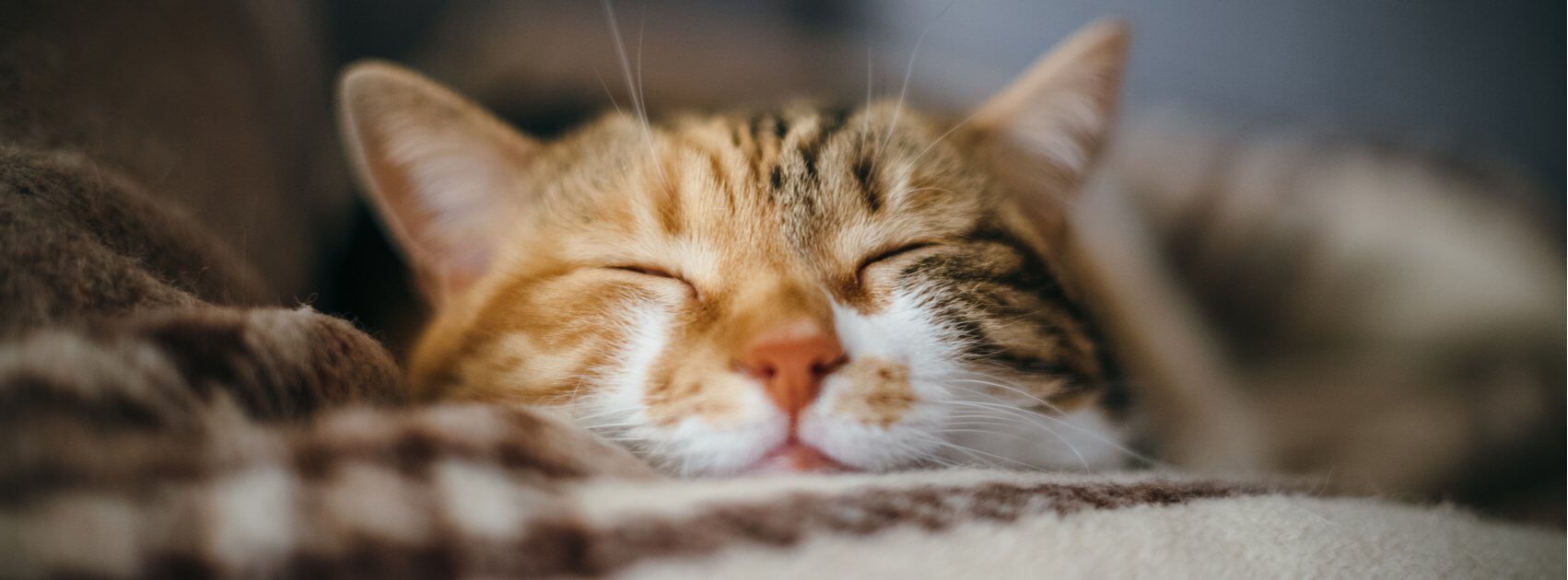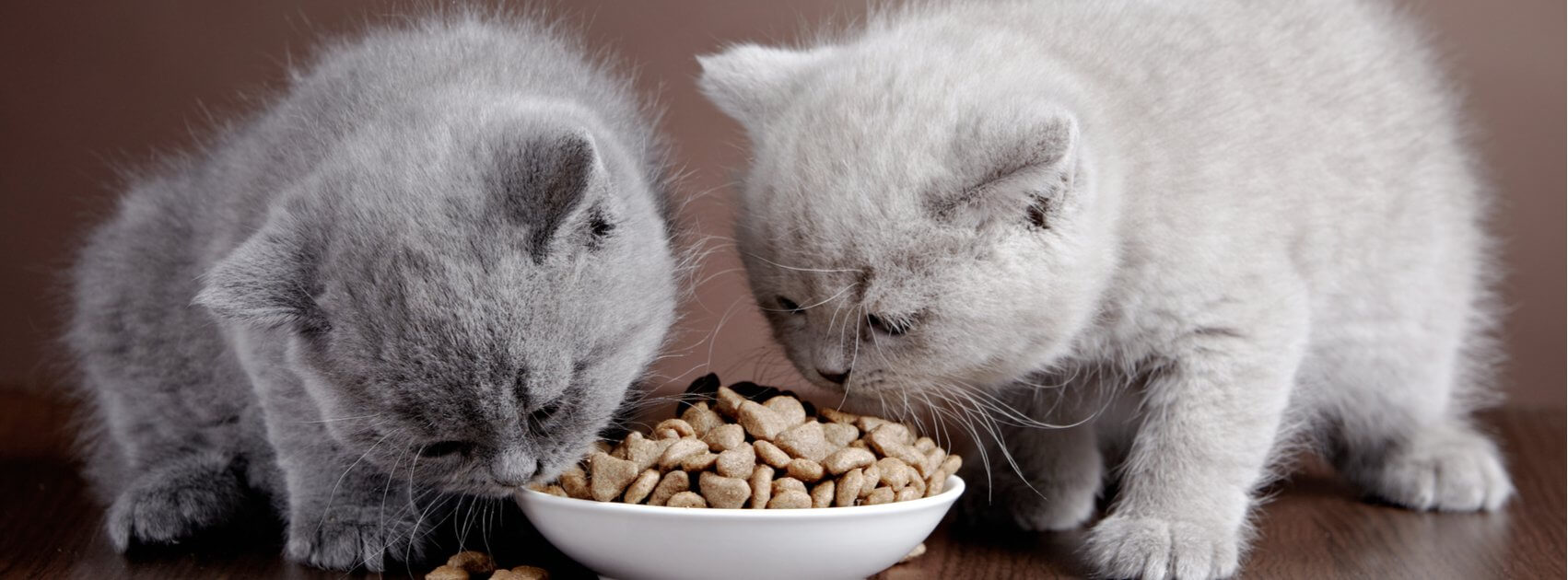Schedule regular vet checkups for your cat
Your cat should be taken to the vet for a health check at least once a year. Your pet’s checkup can be scheduled to coincide with his annual booster vaccinations, saving him the stress of an extra trip to the clinic. A dental and oral health check will be part of this annual review.
The dental check will allow your vet to identify any potential problems that may be forming and treat them accordingly. Between checkups, it is up to you to look after your cat’s oral hygiene at home.
Brush your cat’s teeth daily
Ideally, you should brush your cat’s teeth every day to get rid of plaque and thus prevent the formation of tartar (dental calculus).
Daily brushing is very important, as it only takes a few days exposure to the cat’s saliva for the plaque biofilm to turn into hard tartar. Once your pet’s teeth have a coating of tartar, a veterinary dental cleaning is required to remove it.
If tartar is allowed to form unchecked, your pet will develop gingivitis, and ultimately, periodontal disease.
Use the right tools
Before attempting to brush your cat’s teeth, you must equip yourself with the right tools for the job. Pet toothbrushes look similar to human ones, but with a smaller head and a longer handle. Pet toothbrushes are often double-ended, allowing you to choose a small brush, depending on what your cat finds most acceptable.
Use a soft-bristle brush of a size suitable for the cat’s oral cavity. Your vet will recommend the appropriate size brush for your cat.
Don’t use human toothpaste to clean your cat’s teeth!
Unlike their human owners, cats don’t spit and rinse when their teeth are brushed! Human toothpaste contains substances that can lead to liver damage in your feline companion. Human toothpaste also contains xylitol, a sugar substitute.
Cats that swallow xylitol and absorb it are at risk of an initial insulin surge followed by a catastrophic drop in blood sugar. Xylitol can also cause severe liver disease in cats.
Some brands of human toothpaste also contain baking soda and other abrasive substances that are irritants to a cat’s digestive tract. For these reasons, you must use only pet-specific toothpaste or gel to clean your cat’s teeth.
These products come in pet-friendly flavors that are more palatable to cats. Additionally, they contain special enzymes that kill bacteria to discourage the formation of plaque. You can get pet-specific toothbrushes, pastes, and gels from your vet or from a reputable pet supply store.
How to brush your cat’s teeth
This is a process that should be introduced gradually, and you need to be patient. Use plenty of praise throughout your cat’s toothbrushing lessons, and reward him with petting, a treat, or play so that the sessions are always fun.
Your pet’s mouth must be pain free, meaning no periodontal disease; otherwise, brushing will be extremely difficult. Never use force to try to restrain your cat.
If your cat becomes aggressive or distressed, stop immediately and consult your vet for advice.
- Start by gently stroking the outside of your cat’s face with your finger. Carefully lift up his lip to expose the outside surfaces of the teeth and gums.
- Repeat the process as above, but this time put a small dab of toothpaste on your finger and allow your pet to taste it.
- Dampen your pet’s toothbrush, add a small amount of toothpaste, and very gently clean the gums and teeth, especially the back upper molars and canines where plaque tends to accumulate.
- Concentrate on brushing the outer cheek-facing tooth surfaces; the cat’s tongue will naturally spread the enzyme-rich toothpaste to the inner surfaces and other hard-to-reach areas.
Give your cat quality toys and chews
Fibrous veterinary treats can provide effective self-cleaning devices for your cat’s teeth. As he chews, his teeth penetrate the material, wiping away plaque and massaging his gums, but this can also lacerate the gingiva.
Although it is not advisable to feed natural bone (chicken necks) that may splinter and harbor bacteria, feline dental chews can be helpful in rubbing away plaque from the teeth while your cat enjoys munching on his treat.
Ensure your cat follows a healthy diet
A diet that comprises primarily soft food can leave a cat vulnerable to greater accumulations of plaque than an animal fed mainly hard kibble. If your cat is prone to oral health problems, your vet may recommend a diet that is formulated to include ingredients that will slow plaque mineralization and decrease oral bacteria.
The Veterinary Oral Health Council provides helpful information about vet-approved plaque and calculus-control products for cats.
It’s possible to prevent feline periodontal disease and gingivitis
- Annual veterinary dental checks are essential for your cat.
- Daily home toothbrushing/cleaning is the best method for to prevent feline periodontal disease and gingivitis. Remember that human toothpaste is not safe for use in cats.
- Fibrous chews can provide effective self-cleaning devices for your cat’s teeth.
- Ask your vet about a diet that will slow plaque mineralization and decrease oral bacteria.
- Water additives are available to help prevent plaque and calculus formation. They can be obtained from your veterinarian.










